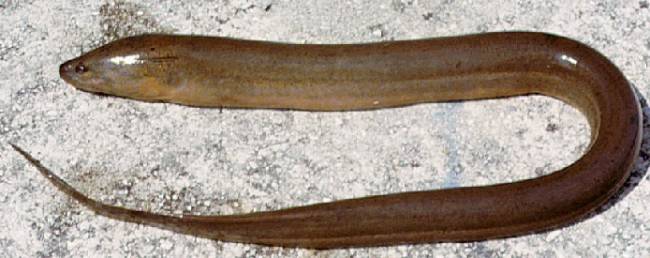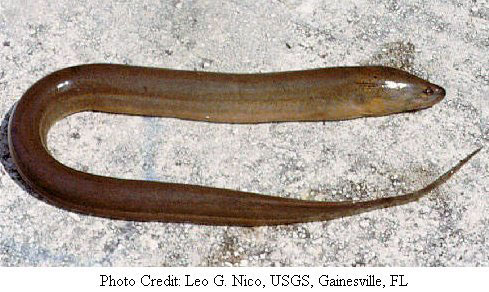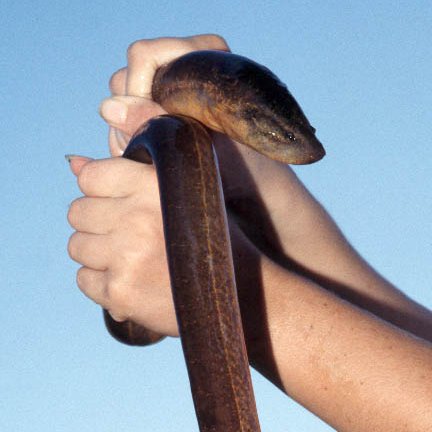
Monopterus albus
FAMILY
Synbranchidae
TAXONOMY
Muraena alba Zouiev, 1793, type locality not specified.
OTHER COMMON NAMES
Cantonese: Wong sin; English: Rice (paddy field) eel; German:
Ostasiatischer Kiemenschlitzaal; Japanese: Ta-unagi; Javanese:
Welut; Khmer: Antong; Laotian: Pa lai; Malay: Belut; Thai:
Pla lai; Vietnamese: Con lu’o’n, luon.
PHYSICAL CHARACTERISTICS
Grows to 39.4 in (100 cm). Eel-like body. It lacks scales and
pectoral and pelvic fins. The dorsal, caudal, and anal fins are
confluent and reduced to a skin fold. The gill openings merge
into single slit underneath the head.
DISTRIBUTION
In India, China, Japan, Malaysia, and Indonesia. Probably also
occurs in Bangladesh, Myanmar, and Thailand. Introduced populations
in Florida, Georgia, and Hawaii in the United States.
HABITAT
It is a generalist that can be found in medium to large rivers,
flooded fields, muddy ponds, swamps, canals and rice paddies;
burrow in moist earth in dry season surviving for long periods
without water.
BEHAVIOR
It burrows in moist earth at the beginning of the dry season,
where it remains for long periods of time.
FEEDING ECOLOGY AND DIET
Feeds on detritus, plants, and small animals. Vulnerable to
crocodilians, otters, and fish-eating birds.
REPRODUCTIVE BIOLOGY
External fertilization. Builds a bubble nest at the surface of the
water near the shoreline. It is not known whether care is afforded
to the eggs and fry. Spawning takes place in shallow
water. After spending part of their lives as females, some individuals
undergo sex reversal, and change into males. Sex reversal
is completed within eight to 30 weeks. All larger individuals
are males.
CONSERVATION STATUS
Not listed by the IUCN.
SIGNIFICANCE TO HUMANS
Marketed fresh because of the good quality of its flesh. Stays
alive for long periods of time as long as the skin is kept moist.
Occasionally sold as an aquarium fish.
Other popular Animals
Photo Gallery of - Swamp eel





 Animalia Life
Animalia Life